With unemployment at an all-time high and the economic outlook far from rosy, the last thing you'd expect an economizing and agonizing public to do would be to play golf.
What was once considered the sporting domain of the 30-something male has caught the attention of a huge number of people of all ages in recent years. While the numbers on the TAEX are plummeting to new lows, golf is at an all-time high. Mothers, teenagers, the elderly and even pre-teens are taking to the links.
"Since I opened the store eight years ago there's been a remarkable change in custom. It's no longer simply 30-plus males who are coming to buy equipment," said Kevin Cheng (
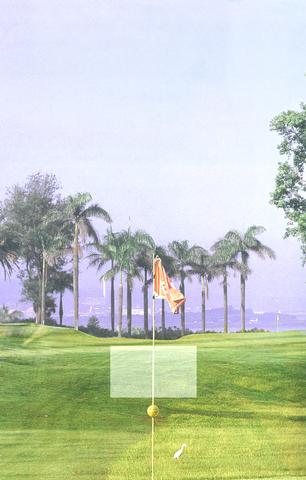
According to the Golf Association of the Republic of China (GAROC,
"We are now seeing golf played not only at sports institutes and to some degree universities, but we're also seeing the sport enter schools. Quite a few middle and high schools now run golf classes," explains Sung Yung-hsiang (宋永祥), deputy secretary of GAROC. "... which is great, as it means the sport is getting more exposure."
The sport was first played in Taiwan at the three-hole Tamsui Golf Course (淡水球場) in 1914. While called a golf course, the "course" was in fact little more than a 600m-by-120m plot of land adjacent to a military base.
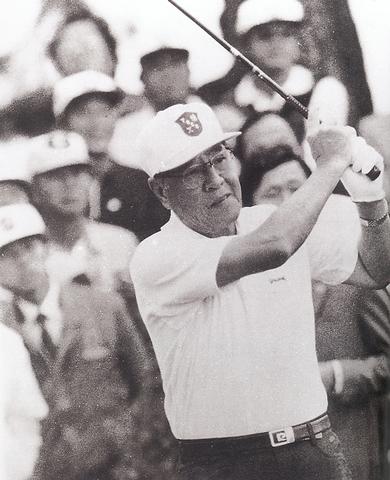
PHOTO COURTESY OF HUANG TE-LI AND TGCC
According to records kept by the Taiwan Golf & Country Club (TGCC, 台灣高爾夫俱樂部) the idea to enlarge the three-hole course was put forward shortly after the nation received a visit from a golfing legend.
Fresh from his victory at the first Japanese Open, Japanese national Inoue Nobu visited Taiwan in 1918. Invited to give a demonstration of the sport at the Mabacho Military Base in northern Taiwan, Nobu's display caught the attention of the Japanese high-ranking military figures and industrialists. The search was soon on for a site on which to construct the nation's first golf course.
On July 9, 1918, the general manger of the Bank of Taiwan, Sakurai Tetsaro, submitted an application to lease a plot of land owned by the army on the outskirts of Tamsui.
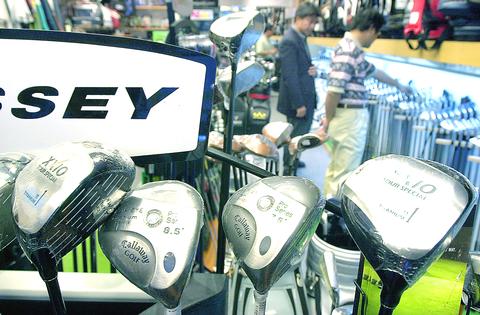
PHOTO: CHEN CHENG-CHANG, TAIPEI TIMES
The application was approved in October of the same year and construction of a six-hole, 1,224-yard course began in earnest. The course took six months and hundreds of locally conscripted grunts of the Japanese Imperial Army to complete.
Taiwan's first official golf course opened for business on June 1, 1919. Celebration of the new club, however, was rather muted. Of the 120 guests which had been invited to the opening ceremony, only 40 bothered to make an appearance.
With annual fees at a staggering ?3 the clubs' original membership roster included very few local players. It would be nearly six years after the defeat of Japan that local players would enter the scene in any considerable numbers.
In 1927, expansion of the Tamsui course was completed and the nation had its first and only 18-hole golf course.
"When the 18-hole course opened in the late 1920s it was still predominantly high-ranking Japanese officials who would be seen on the links, but a handful of local players had picked up on the game. Competitions were still pretty small-scale affairs throughout the 1930s, though." states Huang Te-li (黃德利), manager of the TGCC.
"Not that international players didn't visit the course. In 1937 Walter Hagen came here to play and was reportedly very impressed with the course and standard of golf in Taiwan."
Golf in Taiwan was bombed back into the Stone Age in 1945, when US bombing raids aimed at Japanese defensive positions in the Tamsui area managed to destroy the entire back nine holes of the nation's only golf course.
While it was the Japanese military which brought golf to Taiwan, it was the US military who would first popularize the sport.
In 1952, the US Advisory Body to Taiwan requisitioned the TGCC as the headquarters for a social club. Shipping in a bulldozer from the US especially for the task, the Advisory Body set about filling in the bomb craters and renovating the course.
While the club remained primarily a place for foreigners rather than local players to hone their golfing skills, the large number of golf-playing US citizens and military personnel demanding the latest golfing equipment meant that golf consumerism was soon introduced to Taiwan.
"When the US forces began to be based here the sport began to open up considerably. Whereas the Japanese had frowned upon locals who played, US players were always more than happy to play with locals," recalls Sung. "Of course, the equipment was still far too expensive for most local players, but for those with a few dollars to burn all the latest equipment could be purchased ... at the PX stores.
Gloves, shoes, bags, everything local golfers could never have gotten hold of during Japanese occupation was suddenly widely available."
With the arrival of the US forces in Taiwan, the sport continued to grow in popularity. And by the mid-60s there were a dozen golf courses scattered across the nation. The sudden opening up of the sport in the early 1950s meant that Taiwan also boasted a handful of professional players.
Local golfers such as Chen Ching-shoel (
All this changed in the early 1970s. When Lu Liang-huang
"There have been quite a few players, both professional and amateur who have publicized the sport and brought it into the living rooms of the nation, but Lu was the first professional to really create a storm," explains Huang.
The biggest boost to golf over the past decade is considered by many to be Lee Tung-hui's (李登輝) many appearances on the links under the gaze of television cameras.
"You'd be surprised at how many people started to play golf simply because they saw the president playing it on television," said Huang.
Due to Lu's cap-waving antics and the prosperous economic climate enjoyed by Taiwan throughout the late 1970s, and 1980s golf exploded. Courses were constructed at an alarming rate regardless of zoning or building restrictions and by 1990 there were 83 golf courses dotted around the nation.
Calls from environmental organizations warning of the damage caused by so many courses, and future damage should the practice be allowed to continue unchecked, led the government in December of 1990 to put a cap on the construction of new golf courses.
Those in northern and central Taiwan wishing to capitalize on the growing golf market now have to wait until April 2009 before they can once again commence construction of new golf courses. The government also plans to ensure that new courses are not built on land unsuited to such ventures. Whereas courses could previously be built nearly anywhere, environmental and residential organizations have demanded that courses be constructed on land that land is solely zoned as recreational land.
Not that the restrictions and new zoning laws effect the entire nation. In Hualien, the local government and East Coast Tourism Bureau are allowing four new courses to be built, two of which are being constructed at the Promised Land Resort on the outskirts of the city of Hualien.
"The courses are at present still in the planning stage, but I don't see any problems arising as the site we've chosen adheres to the EPA and government standards and is on land classified as recreational land," states Paul Wang (王俊德), vice president of the Promised Land Corporation. "We hope to have at least one of the courses open in about a year and a half and the other shortly afterwards."
The owners of the resort are not only hoping to cash in the growth in popularity of golf on a local scale, but are also planning to court the large number of tourists who are expected to flock to Taiwan from China when the five-decade travel ban is lifted. It is also hoped that, on completion of the new Hualien International Airport, tourists from Japan will also make good use of the courses.
While 10 years ago the thought of having entire families traipsing around golf courses would have been considered by many in the golfing community as scandalous, Wang's company is not alone in its family-orientated line of thinking.
The recent economic slowdown has led many clubs to begin actively promoting the concept of golf as a family sport. Many of Taiwan's 83 golf courses have been forced to reduce their once lofty membership fees and introduce family membership.
"Membership fees have been slashed quite considerably over the past couple of years. Whereas a couple of years ago clubs such Linkou and Changan would be charging membership fees upwards of NT$500,000 per year, they are now down to around NT$300,000," states Sung. "And some of the smaller golf clubs have axed membership fees to as little as NT$20,000 per annum."
While the owners of the clubs who are raking in less profit might beg to differ, according to many in the local golfing community the slashing of membership fees is not entirely a bad thing. In fact, it could be just what golf in Taiwan needs.
"It's the perfect environment in which to foster new talent," argues Huang. "With the cost of joining a golf club way down, hopefully it will attract younger players who wouldn't have had the opportunity to play before."
At present the TGCC is actively promoting the sport and is giving scholarships to young players it considers worthy of special one-on-one training. One of the young players the professionals at the TGCC are keeping a beady eye on is a 15-year-old female player -- a player whom Huang feels has the potential to one-day represent Taiwan at the international level.
And it's not only the cost of joining a club that has seen an increase in the number of those taking to the links. The cost of golfing equipment has also dropped considerably.
According to Cheng, the average price of top-of-the-line clubs has decreased by between NT$5,000 to N$10,000 depending on the brand. People are even purchasing second-hand clubs nowadays, something that would never have occurred to golfers in the past.
"Up until a couple of years ago, a large number of golfers were under the impression that the only equipment worth using was the latest top of the range gear," recalls Cheng. "People wouldn't really know much about the pros and cons of certain equipment, they'd look at the price tag, figure that because it was really expensive it was brilliant and buy it. Pretty dumb really." Cheng's customers have wised up greatly, however. The proprietor is now finding that many of his clients have done quite a bit of research prior to investing in a set of clubs. Which has not only led to increased sales, but Cheng feels will see the once-ripe trade in counterfeit clubs eradicated.
In one single raid last year, police confiscated more than 700 sets of brand-name golf gear at a golfing store in Linkou. The market value of the fake Callaway, Mizuno and Honma equipment was estimated at NT$100 million.
While Cheng admits that counterfeiters still produce clubs in Taiwan, he feels the number has dropped quite dramatically. Many have moved on to greener pastures on the opposite side of the Taiwan Strait.
Sadly, it is not only the counterfeiters who are taking their business overseas. While Huang and the professionals at the TGCC continue to cultivate new talent the nation's professional golfers are finding it increasing difficult to eke out a living playing golf in Taiwan.
"It's not that there's a lack of players, rather that there's a lack of sponsors willing to organize competitions in Taiwan. Because the cost of attracting the world's top golfers to Taiwan has risen at such a rate, many companies no longer want to take the risk. Which is a shame. As more and more people take up golf in Taiwan, the lack of competitions has left us with a void," said Huang. "We'll continue to cultivate new talent, but where it will lead is anybody's guess."
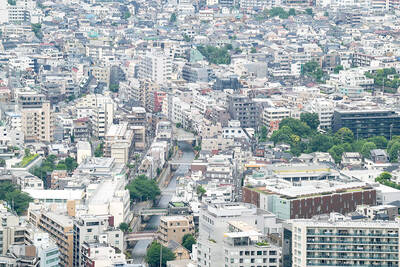
The canonical shot of an East Asian city is a night skyline studded with towering apartment and office buildings, bright with neon and plastic signage, a landscape of energy and modernity. Another classic image is the same city seen from above, in which identical apartment towers march across the city, spilling out over nearby geography, like stylized soldiers colonizing new territory in a board game. Densely populated dynamic conurbations of money, technological innovation and convenience, it is hard to see the cities of East Asia as what they truly are: necropolises. Why is this? The East Asian development model, with
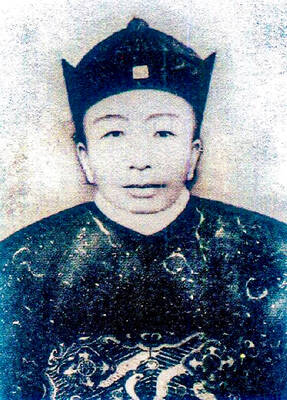
June 16 to June 22 The following flyer appeared on the streets of Hsinchu on June 12, 1895: “Taipei has already fallen to the Japanese barbarians, who have brought great misery to our land and people. We heard that the Japanese occupiers will tax our gardens, our houses, our bodies, and even our chickens, dogs, cows and pigs. They wear their hair wild, carve their teeth, tattoo their foreheads, wear strange clothes and speak a strange language. How can we be ruled by such people?” Posted by civilian militia leader Wu Tang-hsing (吳湯興), it was a call to arms to retake
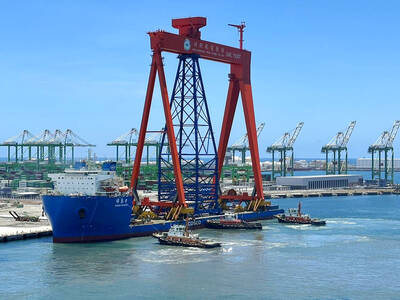
This is a deeply unsettling period in Taiwan. Uncertainties are everywhere while everyone waits for a small army of other shoes to drop on nearly every front. During challenging times, interesting political changes can happen, yet all three major political parties are beset with scandals, strife and self-inflicted wounds. As the ruling party, the Democratic Progressive Party (DPP) is held accountable for not only the challenges to the party, but also the nation. Taiwan is geopolitically and economically under threat. Domestically, the administration is under siege by the opposition-controlled legislature and growing discontent with what opponents characterize as arrogant, autocratic

Desperate dads meet in car parks to exchange packets; exhausted parents slip it into their kids’ drinks; families wait months for prescriptions buy it “off label.” But is it worth the risk? “The first time I gave him a gummy, I thought, ‘Oh my God, have I killed him?’ He just passed out in front of the TV. That never happens.” Jen remembers giving her son, David, six, melatonin to help him sleep. She got them from a friend, a pediatrician who gave them to her own child. “It was sort of hilarious. She had half a tub of gummies,